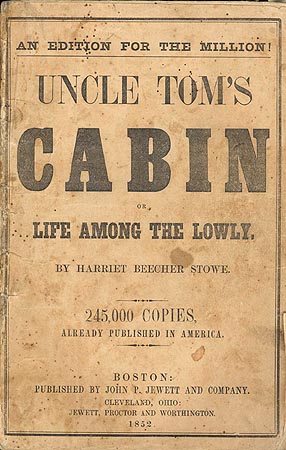| << Chapter < Page | Chapter >> Page > |
Though Stowe’s Dred comments more directly on the issue of slave revolt, it is the discovery of Uncle Tom’s Cabin in Brazil that occasions Dunham to once again reflect, though somewhat circuitously, on the constant possibility of rebellion within a slaveholding society. He writes, “I find that Uncle Toms Cabin has got into Brazil and the people will read it. It is translated into Portuguese by a French man and several of them have got into the country but the Government has prohibited the sale of it. I have seen a Brazilian that can read English reading a book that he appeared very cautious about any one seeing the title of but I saw on the cover, Uncle Tom’s Cabin” (168-9). Here, Dunham implicitly recognizes the power of this book to incite anger and resentment toward the slave system. The attempt by the Brazilian government to limit its circulation reveals the fear that Stowe’s novel, alone, may lead to the wider spread of violence and other forms of anti-slavery resistance throughout the country. Uncle Tom’s Cabin ’s influence ranged far beyond U.S. borders, contributing to the ongoing struggles against slavery in locations such as Brazil and Cuba. Its sudden and unexpected appearance in Dunham’s journal reminds us that literary texts not only depicted but also played a vital role in the various movements against slavery throughout the nineteenth-century Americas.
Uncle tom's cabin, 1852

This module will conclude with a brief overview of a few of the scholarly works that have contributed to our ever-expanding awareness of the transnational dimensions of African slavery within the Americas. From a literary studies perspective, there is perhaps no better place to start than Sundquist’s To Wake the Nations: Race in the Making of American Literature . Sundquist takes the Haitian Revolution to be a foundational event in the construction of an American literary tradition. Moreover, as he centralizes slavery and its shaping of racial relations within his analyses of literary texts, he continually charts the connections between U.S. and Caribbean models of slavery and emancipation. Anthropology and history have perhaps done an even better job in charting the crucial interdependencies among national and colonial slave systems in the Americas. More specifically for the questions that we have asked here, there are several important works that look at anti-slavery movements from a transnational perspective. Richard Price’s Maroon Societies: Rebel Slave Communities in the Americas provided an early contribution to this conversation. More recently, in his The Americas in the Age of Revolution, 1750-1850 , Lester Langley investigates the intersections between anti-colonial and anti-slavery movements across a variety of national and colonial locales. Finally, The Chattel Principle: Internal Slave Trades in the Americas , a collection of essays published through Yale University’s Gilder Lehrman Center for the Study of Slavery and Emancipation, examines how both pro-slavery practices and abolitionist sentiment and action traveled along a variety of international routes throughout the nineteenth century. Dunham’s Journey to Brazil marks another potential moment within this dialogue. It helps to illustrate that, like the institution itself, resistance to slavery possessed a certain type of mobility, a hemispheric circulation.
Bibliography
Delany, Martin. Blake; or, The Huts of America . Boston: Beacon Press, 1970.
DuBois, Laurent. Avengers of the New World: The Story of the Haitian Revolution . Cambridge, MA: Belknap Press of Harvard UP, 2004.
Hunt, Alfred N. Haiti’s Influence on Antebellum America: Slumbering Volcano in the Caribbean . Baton Rouge: Louisiana State UP, 1988.
James, C. L. R. The Black Jacobins: Touissant L’Ouverture and the San Domingo Revolution . New York: Vintage Books, 1963.
Johnson, Walter, ed. The Chattel Principle: Internal Slave Trades in the Americas . New Haven, CT: Yale UP, 2004.
Langley, Lester D. The Americas in the Age of Revolution, 1750-1850 . New Haven and London: Yale UP, 1996.
Melville, Herman. Benito Cereno . Barre, MA: Imprint Society, 1972.
Price, Richard. Maroon Societies: Rebel Slave Communities in the Americas . Baltimore: Johns Hopkins UP, 1979.
Stowe, Harriet Beecher. Uncle Tom’s Cabin. New York: W. W. Norton, 2007.
-----. Dred: A Tale of the Great Dismal Swamp . New York: J. W. Amerman, 1856.
Sundquist, Eric J. To Wake the Nations: Race in the Making of American Literature . Cambridge, MA: Belknap Press of Harvard UP, 1993.

Notification Switch
Would you like to follow the 'Slavery in the americas' conversation and receive update notifications?